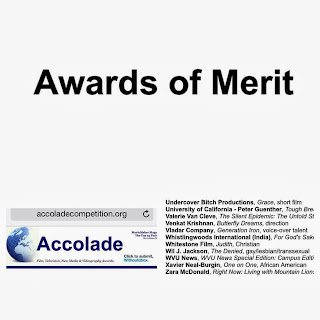You can check out more info HERE. My film also received an Award of Merit in the African American category of The Accolade Competition.
You can check out the link HERE. I'm waiting to hear back from other competitions and festivals, but it was amazing to receive good news from these ventures.
My third semester at USC's School of Cinematic Arts has been focused on cinematography and learning the in and outs of rental houses. I'm taking an intermediate cinematography class with Director of Photography, Linda Brown, while working at Panavision. Outside of class, I've focusing on honing my directing chops. I directed a comedy sketch for the group, Wolf Punch Comedy.
I directed an episode of the webseries, Black Man Depressed.
Each of these projects are in post-production. I'll have the chance to show them at the beginning of next year. For now, I'm in the production stage of a webseries I'm directing called "Sassy Batman."
These past few gigs directing have been immensely rich. I've focused on Uta Hagen's "Six Steps", studying character and structural beats, character arcs, motivation, and the proper usage of verbs to communicate with actors. It's difficult putting these techniques into action, especially on set. When you're in the thick of shooting you're usually thinking on your feet. I've found that sitting down with your actors beforehand, and discussing the intention of their characters leads to a smoother actualization of your ideas.
Giving them objectives for the scene, conscious and unconscious goals, plus asking them ambiguous and direct questions allows them to create a foundation for their role. The best outcome arrives when an actor formulates a new path for a character you didn't realize based on discussion. It's the intimate relationship between directors and actors which shines through these techniques, questions, discussions, and research.
The process of directing is arduous. It is commanded by an innumerable amount of ideas, provisions, and strategies. Still, there is a large chunk completely dependent upon chemistry, luck, and physical play. During the Wolf Punch's Daisy's Enfeugo sketch, I repeatedly swooned with one my actors to help her feel "dainty." A few shots later I was jumping/high stepping with my actors right before shouting action. I wanted to ensure their pile-drive into the third character felt authentic. There's a set of guidelines towards bringing the best out of your actors, but there are instances when your instinct serves you best.
Granted, I'm still learning. I admit this. I'm proud of it. I'm growing. Each time I'm on set working with actors I sense growth, a maturity in my direction. I couldn't ask for more.
















